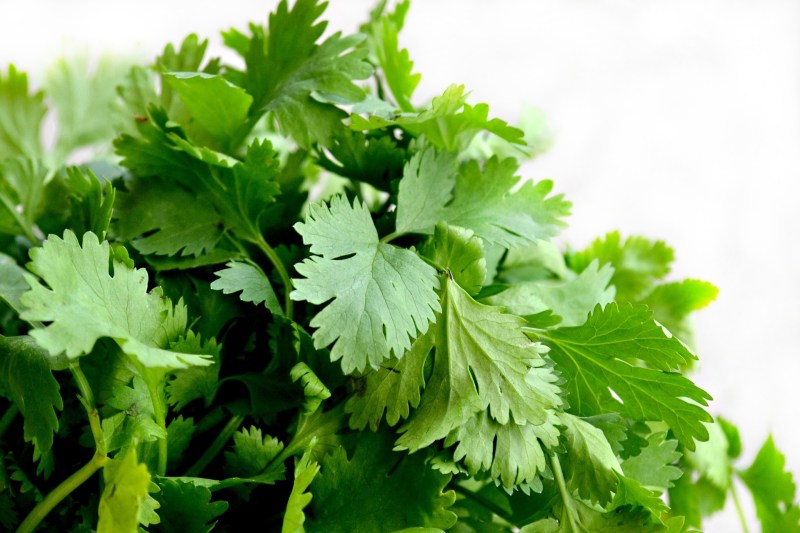
In our daily lives, there’s a lot of conflict. For just about everything, we hotly take our sides of the aisle, no matter how critical or comparably insignificant the topic — politics, religion, the position of the toilet paper roll. The list goes on, and we stay firmly planted on our sides.
In the culinary world, perhaps the most passionately debated food is that of the popular leafy green herb we call cilantro. And while we cilantro lovers have been quick to judge those who detest this beautifully earthy ingredient, it may be time to actually hear them out. There’s a chance that their hatred of our favorite, beloved taco garnish is based on an actual mutation in their genetic makeup, and not poor culinary taste.
To most, cilantro — leaves from the coriander plant — has a slightly spicy, herbaceous, and bright flavor that makes for a perfect accompaniment to many of our favorite dishes. We love it in our salsa verde, our lime rice, and creamy dressings. It’s the perfect finishing touch on foods like enchiladas, spicy shrimp skewers, or grilled flank steak. It’s arguably the most popular fresh herb right now, and many of us probably have a bunch or two in the fridge at this very moment. But for a rather unfortunate few, instead of the dazzlingly green and peppery flavor it should provide, cilantro tastes like soap. Yum.

So what’s the deal with the soapy flavor of cilantro?
According to 23 and Me — a company that specializes in DNA testing and the study of genetic variants — there’s a genetic component to cilantro taste perception. The findings revealed that those who describe the herb as having a soapy flavor were found to have specific genetic variants in their olfactory receptors. More specifically, they had the CC genotype of SNP rs72921001 found in the OR6A2 gene. This cilantro soap gene enables the palate to detect the aldehydes in cilantro leaves, which are very soapy in flavor.
Even more interesting is that the research revealed that certain ancestries play an enormous role in this genetic mutation. It would appear that in cultures where cilantro is heavily grown and used, people are far less likely to have this mutation. In the study, 14-21% of people of East Asian, African, and Caucasian ancestry found cilantro to taste of soap, while only 3-7% of those who identified as South Asian, Hispanic, or Middle Eastern reported the same sensation.
So if you’ve ever frustratingly picked out each tiny green fragment of tauntingly bright green cilantro leaves from your albondigas, rolling your eyes at those exclaiming, “You don’t like cilantro?! What’s wrong with you?!” you can blame your genetics.



